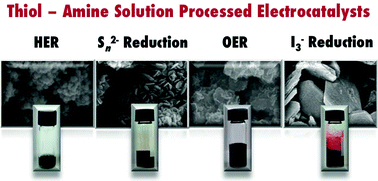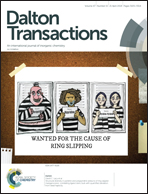Preparation of electrocatalysts using a thiol–amine solution processing method
Abstract
Solution processing has emerged as a promising option for the preparation of functional materials with methods that tend to be cheap, less energy intensive, and allow for high throughput and large area deposition. A recently developed method, whereby a binary thiol–amine solvent mixture is used to dissolve bulk oxides, chalcogenides, or elemental materials to yield molecular precursor inks for the deposition of phase pure chalcogenide materials, has recently garnered attention for applications in optoelectronics, thermoelectrics, and electrocatalysis. Presented here is a summary of reports on the application of this “alkahest” method for the deposition of electrocatalytic materials. Ink formulations drawing on the vast library of bulk precursor solutes have already resulted in a large collection of synthesized functional materials, with room still to explore new, or less studied, materials. Additionally, as is seen for the electrocatalysts, engineering of inks and deposition procedures can lead to higher performance through optimized morphology and form factors.

- This article is part of the themed collection: 2018 Frontier and Perspective articles


 Please wait while we load your content...
Please wait while we load your content...
